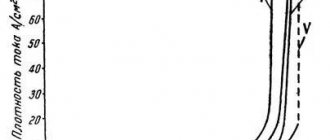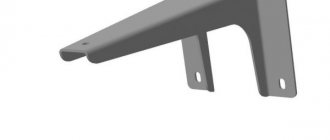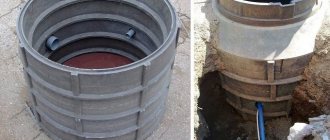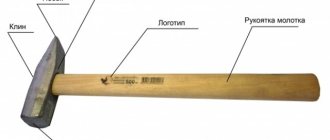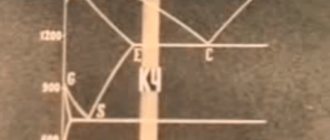The function of grounding and zeroing is one - protecting people from electric shock. A current-carrying conductor has become exposed, current has leaked into the body of an electrical appliance, or the socket body has been damaged - such a problem can lead to unpleasant consequences.
The protective devices in question, which are designed to neutralize the dangerous factor and ensure the safety of a person and his property, will help to avoid this. In the article we will tell you about grounding and grounding, what are the differences and similarities, and consider their purpose and installation diagrams.
What is the difference between grounding and grounding?
It is most convenient to consider the difference between grounding and grounding using the example of connecting household electrical appliances. Modern houses are equipped with three-wire electrical wiring, where the PE conductor is the grounding conductor and does not depend on the working zero conductor N. Thus, the body of the electrical appliance connected to the PE conductor receives a reliable connection to the ground - grounding.
Grounding diagram indicating splitting into N and PE on the terminal block of the shield
Old buildings have a two-wire power supply, consisting of a conductor L - phase, N - working zero. N is output from the grounding bus in the common house or entrance electrical panel. It is originally called a PEN conductor and can be split into N and PE.
Splitting must be done before entering the apartment distribution panel, or directly into the panel .
Next, the PE wire is connected to the body of the electrical appliance in the same way as in the first option, but such a circuit will be called grounding, since the connection to the ground is not direct, but is carried out through a neutral conductor.
How to distinguish zero from grounding
Modern electrical wiring is carried out using three wires - phase, neutral and grounding, and when carrying out installation or repair it is important not to confuse these conductors.
Although most electrical appliances operate the same when connected in phase-to-neutral and phase-to-ground circuits, in many situations this is critical, so it is important to know how to distinguish zero from ground.
If the phase wire is easy to determine with a phase indicator or an indicator screwdriver, then the neutral and grounding in relation to the phase are identical and special methods must be used to determine the purpose of the wires.
Which system is more reliable?
For comparison, here are a few points:
- As practice shows, there are frequent cases of a break or burnout of the neutral wire in the electrical panel, which makes the neutralizing protection system inoperative. In this case, there is a real threat of electric shock to a person. To avoid such a problem, switching points must be periodically inspected, which creates certain inconveniences.
The burnt neutral wire in the distribution panel is close to a complete break
- The grounding system is free from these disadvantages, since the PE conductor does not participate in the overall operation of the electrical wiring and is activated only when a leak occurs in order to drain the current to the ground.
- The grounding device requires certain knowledge and skills in working with electrical circuits, which, in the absence of them, also causes some inconvenience associated with the need to call an electrician.
Taking into account the above, we can conclude that the grounding system is more reliable and safe, so it is better to use it. However, if this is not possible, you can resort to an alternative option. It is prohibited to ground directly in the socket by installing a jumper between the neutral connector and the grounding bracket. This poses a threat to humans (electric shock) and to household appliances.
Additional information about finding the ground, phase, neutral wire
We remind you that we considered cases when there is no indicator screwdriver at hand, but there are current clamps and a multimeter. Then, before entering the apartment, they detect the ground, phase, neutral wire, and the home network is dialed. There are three cores, the technique is on the surface: between the phase and the other wire, the potential difference will be 230 volts. Please note that the technique is not suitable in other cases. For example, the voltage difference between two identical phase conductors is zero. It is difficult to measure and determine with a tester.
Let's add another method - it is prohibited by industry. A light bulb in a socket with two exposed wires. Using the tool, they find the phase; it is possible to short the core to ground. You cannot use water, gas, sewer pipes or other engineering structures. According to the rules, the cable antenna braid is equipped with grounding (grounding). In relation to it, it is permissible to use a tester (a light bulb in a socket prohibited by standards) to find the phase.
For determined people, we recommend fire escapes and steel tires for lightning rods. You need to clean the metal until it shines, call the phase phase. Please note that not all fire escapes are grounded (although they must be), lightning rod buses are 100%. If you discover such blatant arbitrariness, contact the management organizations; if there is no response, inform the government authorities. Indicate a violation of the rules for protective grounding of buildings.
Arrangement of protective current taps when working with three-phase electrical equipment
Switching three-phase electricity consumers differs from connecting conventional household electrical equipment, therefore the installation of protective systems is carried out in a different way. In this case, you should not confuse the neutral or ground wire involved in the control system, that is, involved in the start-up and stop circuit of the unit, with the protective conductor designed to divert a dangerous discharge to the ground.
Design, wiring, connection of electrical equipment
The work is carried out in several stages:
- A separate line (route) is installed along the perimeter of the room, made of a narrow metal strip 40x3 mm or copper wire with a cross-section of 16 mm2.
- A busbar (preferably copper) with contact devices (studs or holes for bolted connections) is mounted on it in a hidden place. It is possible to use a metal bus, but in this case welding the studs is a prerequisite.
- This line is connected to a grounding or grounding circuit, which is led out by a separate wire from the switchboard and has a reliable connection to the ground either directly or through a working zero
- The housings of all consumers (three-phase electric motors) are connected via a copper wire to the described bus.
If a short circuit occurs from a voltage leak due to an insulation failure or a “breakthrough” of one of the phases onto the body of grounded electrical equipment, the current will immediately flow into the ground along the path of least resistance, that is, through the conductor connected to the working zero or ground. This will protect a person from electric shock when touching the body of the device.
A grounding device is allowed only if it is not possible to switch with the ground loop. In all other cases, only protective grounding is considered correct .
The unit is connected through a copper wire to a bus mounted from the grounding path
Mandatory use of additional protective devices
The described grounding and neutralizing systems are effective when significant leaks or short circuits occur on the housing of electrical appliances. However, to achieve complete safety when servicing equipment, it is necessary to use additional means of protection to ensure that the electrical circuit is broken when malfunctions occur.
At manufacturing enterprises, these can be automation units (insulation monitoring of BKI or maximum current protection). But the most common means, both in production and in everyday life, are circuit breakers and residual current devices, which:
- will ensure that the electrical circuit is de-energized in case of problems;
- protect the user from electric shock;
- will protect equipment from fire.
Such devices can be designed for single-phase or three-phase systems. They are:
- single-pole - installed on one of the lines (zero, phase);
- bipolar - installed on both wires of the electrical wiring;
- multi-pole (three or more) – used for three-phase voltage.
Practical recommendation: both VA and RCD devices are protection devices, but they perform different functions, so it is advisable to use them together.
Household wiring diagram with PE grounding conductor and VA and RCD protection.
The circuit breaker turns off when the current load exceeds the rated value indicated on the device body. The RCD monitors the state of the electrical network and is triggered when the slightest current leakage occurs.
Practical advice: it is recommended to install an RCD in the circuit of all powerful household consumers (10-30 mA) and a general RCD in the apartment panel (300 mA).
Two connection schemes
The same zero break, but the consequences are so different
To understand the role of “Zero” and “Earth”, you need to delve a little into the essence of the methods of delivering electricity to end consumers and the differences between the latter.
It should be mentioned that electrical systems can be linear and phase. Linear ones are used in the industrial field of activity, where increased power is required (380V), phase ones exist for use in everyday life (220V). In both cases, the connection diagrams use three wires. Only for linear (380) there is a phase in each of the three wires, and in the household version (220V) there is Phase, Zero and Ground.
For security, each system uses its own connection schemes. We will not consider industrial networks, but household networks should be studied; two schemes are used here:
- TT – full grounding
- TN-CS – joint connection of ground and zero, after the power consumer
Connection diagrams used: 1. To zero, 2. To ground
To make it more clear, let's decipher the abbreviation:
- T – earth
- N – neutral
- S – separate, independent
- C – combine
- L – phase
- PE – protective
- PEN – united
These two schemes are used, but one more existing scheme, TN-C, should be pointed out - this is an old, but still valid system used in most “old” houses, which has the abbreviation PEN.
In it, Zero and Earth are combined (PEN) throughout. Such networks are not entirely safe, especially for electrical appliances. They were installed in Soviet times, few household appliances were used, and therefore the designers did not see the point in unnecessary spending on electrical wiring for the sake of a couple of dozen televisions (the loads were small) - 30% savings! At industrial enterprises, grounding was done separately.
Possible faults in the electrical network and the operation of protective devices when they occur
Users are presented with a description of the most common problems that arise during the operation of electrical appliances. For the convenience of considering this issue, the information is summarized in the table:
| No. | Malfunctions | Protection |
| 1. | Damage to electrical insulation in the wall or ceiling | Grounding (grounding) RCD |
| 2. | Current leakage into the housing due to humidity, contact failure, or wire chafing | -/-/-, RCD |
| 3. | Short circuit | -/-/-, Automatic switch |
| 4. | Failure of the heating element or motor (phase breakdown on the housing, including through water) | -/-/-, VA |
| 5. | Action through the body of the device of current from the capacitors of the electronics system | -/-/-, RCD |
With proper protective grounding (grounding) and the use of additional protective equipment, these factors will not cause significant harm to property or human health.
